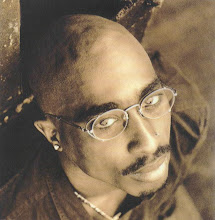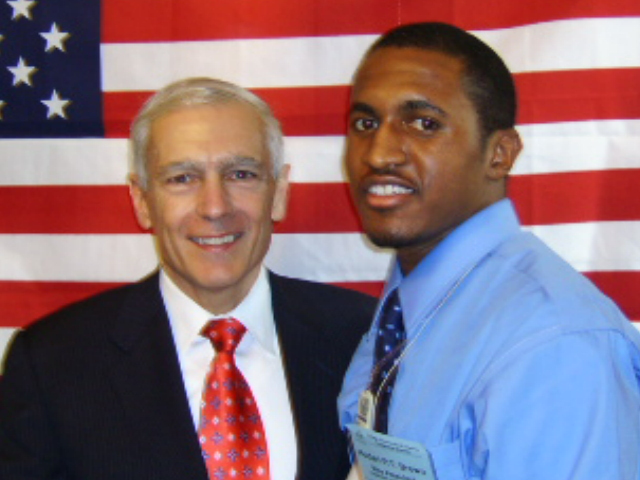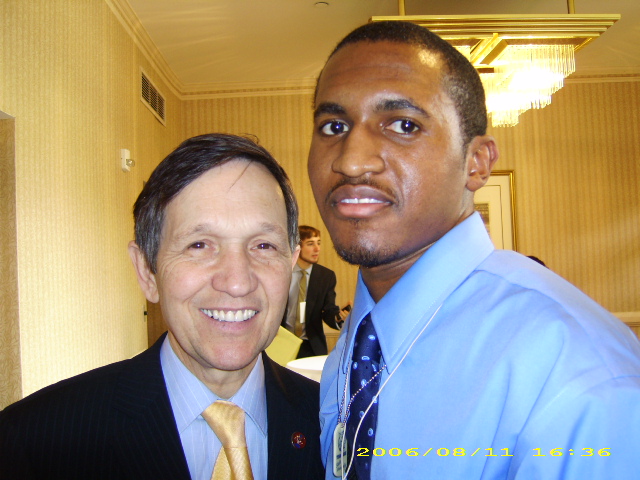Average SAT scores were stable or rising most years from 1994 to 2004, but have been trending downward since. That's likely due in part to the widening pool of test-takers. That's a positive sign more students are aspiring to college, but it also tends to weigh down average scores. Forty percent of students in this year's pool were minorities and more than one-third reported their parents had never attended college. More than a quarter reported English was not their first language at home. However, the scores also indicate a widening of the gaps that have made the test a target for critics of standardized testing. On the three combined sections, men scored 27 points higher on average than women, compared to 24 points higher last year. That gap is mostly attributable to men's higher math scores. Average combined scores for white students declined two points, but scores for black students fell four points, widening the racial gap. Average scores for two of the three categories the College Board uses for identifying Hispanics also declined.
Meanwhile, average combined scores by students reporting their families earned over $200,000 surged 26 points to 1702, an increase that could fuel further criticism the test is too coachable and favors students who can afford expensive test-prep tutoring. The College Board, the not-for-profit organization that administers the exam, strongly discourages comparing and ranking states and districts based on SAT results. The test-taking population can vary considerably, and the College Board argues rankings may discourage schools from pushing students to apply for college. Still the fact that more of youth are not ready for college should make all of us upset and the fact that the SAT scores show disparities by race, gender, family income
The fact that the average national SAT scores for the high school class of 2009 dropped two points compared with last year and while the population of test takers was the most diverse ever, average scores vary widely by race and ethnicity. On one end, students who identified themselves as Asian, Asian-American or Pacific Islander posted a 13-point gain. On the other end, students who identified themselves as Puerto Rican posted a 9-point drop in average scores. The SAT's owner, the nonprofit College Board, highlighted the 40% minority participation rate among test-takers this year, up from 38% last year and 29.2% in 1999. "We are tremendously encouraged by the increasing diversity," said College Board president Gaston Caperton. "More than ever, the SAT reflects the diversity of students in our nation's classrooms."
But Bob Schaeffer, spokesman for the National Center for Fair & Open Testing, a critic of standardized tests, says what stands out to him "is widening gaps of all sorts — race, gender and income — at a time when the nation is spending billions of dollars allegedly trying to close those gaps. The promise of No Child Left Behind and of many high-stakes state testing programs is that testing is going to improve educational quality. That's not what the data show." The differences in total SAT scores by ethnicity was most extreme between Asian students (1623 out of 2400) and black students (1276, a four-point drop). Puerto Rican students averaged 1345. The national average was 1509. Top score is 800 in each of the three SAT sections. Total scores also dropped two points on average for white students (1581) and Mexican and Mexican American students (1362), and increased two points for American Indian or Alaskan natives (1448).
Disparities in scores by gender and income also widened. The average scores dropped 5 points for females and 2 points for males. While females represent more than half (53.5%) of test takers, their total average score (1496) is 27 points below that of males (1523). The highest average score of all (1702, up 26 points) was posted by students who said their families earned more than $200,000 a year. Students whose reported family income was less than $20,000 a year averaged 1321, up 1 point. The report's analysis notes that students who had completed a core curriculum, taken their school's most rigorous courses and familiarized themselves with the test were among the strongest performers. For example, students who took an Advanced Placement or honors math course scored on average 79 points above the national average math score. And students who had previously taken the Preliminary SAT/National Merit Scholarship Qualifying Test scored 121 points higher on average than those who did not take the test. "The SAT directly reflects what students have learned in school and how they use that knowledge," said senior vice president Laurence Bunin. "That's why the latest research continues to validate that the SAT, when combined with high school grades, is the best predictor of college success."
Nonetheless, all hope shouldn’t be lost in this war on youth because students can still improve their SAT scores. In fact a mere 30 point bump on the SAT can pay off big in college admissions. A 30-point boost in math and critical-reading scores on the SAT reasoning test is statistically meaningless yet could make or break a student's chances of admission at "a substantial minority" of colleges, a research paper says. And the more selective the college, the more that bump pays off, it finds. The study, based on a survey of 246 college admission officials nationwide and being released today by the non-profit National Association for College Admission Counseling, was commissioned to explore the effect of test preparation for college admission exams. But the report also raised concerns about whether some colleges use test scores inappropriately.
Various independent studies estimate that coaching can improve a test-taker's math and reading scores by 30 points on average — a bump so small on the 1600-point SAT sections that the College Board, which owns the test, says it could be attributed to measurement error. Yet in the new study, 20% to 40% of officials at 130 colleges that consider the SAT in admissions said a 20-point math increase or a 10-point reading increase would "significantly improve a student's chances of admissions" if all other factors in a student's application were the same. "If marginal college admission decisions are made on the basis of very small differences in test scores, a small coaching effect might be practically significant," says author Derek Briggs of the University of Colorado-Boulder. Briggs says he was "pretty stunned" by the findings, given that the College Board and makers of the ACT entrance exam caution against using scores as a sole criterion for high-stakes decisions such as admissions and scholarships. (He did not probe as deeply into ACT data but he says "it is very likely" findings would be similar.) The association for admissions professionals similarly cautions against such practices.
The association said in a statement that the misuse Briggs found is a problem in "a small number of cases." But it added, "These realities are likely to complicate the decisions of students and families trying to determine how best to allocate (time and money) related to test preparation." Association CEO Joyce Smith said the organization plans to "initiate a new round of communications and training" for member colleges and universities. William Fitzsimmons, dean of admission and financial aid at Harvard University and chairman of a commission created by the association that last September urged research on the subject, says most schools probably use the test appropriately, but "misuse of test scores is a major public policy issue."
Nonetheless, there are still admissions groups that have concerns about the misuse of the PSAT, SAT and ACT. Back in September 2008, the National Association for College Admission Counseling (NACAC) released a report raising concerns about the misuse of standardized test scores. The concerns were outlined by members of the Commission on the Use of Standardized Tests in Undergraduate Admission, led by Harvard admissions dean William Fitzsimmons. The report raised a bit of a stir, and NACAC said members intended to look into the commission's recommendations carefully. Today, NACAC today is posting online its recent correspondences with three key testing stakeholders -- the College Board (which makes the SAT), the National Merit Scholarship Corporation (or NMSC, which uses the PSAT/NMSQT as a preliminary screen) and the ACT (which makes the ACT) -- saying, that the admissions counseling group hope those organizations will cooperate with them as they work to "ensure that the recommendations ... come to fruition."
You can read those letters here (see * below). Suffice it to say that all three organizations look forward to working together with NACAC, etc., etc. Well, sort of. ACT also said, "we do not believe that all of the commission's findings are consistent with the available facts." The College Board noted that a 2004 College Board Trustee Task Force concluded that the NMSC process for choosing scholarship met "the highest and most strenuous national standards on testing." And NMSC's top officials wrote that they "fully concur" with the College Board's comments. In its response, also posted and sent to reporters, NACAC said it, too, looks forward to working with organizations, etc., etc. But, it added: the College Board and National Merit Scholarship Corporation "did not directly address NACAC's concerns."
While it is "encouraged" by the College Board and ACT’s internal audits to ensure proper test use, "our experience has shown that continued attention and oversight may be necessary to ensure ethical practice in admission." In response to a comment by ACT that the commission appear to think (wrongly) that the ACT and the SAT are "based on identical philosophies and that they measure the same skills," responded that the commission knows perfectly well what the differences between the two tests are, but that is largely irrelevant. There's more. Soon, NACAC says, it will come out with its "first major research effort" since that report, on test preparation. And this fall, it plans to unveil a new textbook on the fundamentals of college admission testing and it can be found at www.nacacnet.org.
Therefore we have to do better as a nation to help improve the conditions of education for our youth. If our youth can’t pass the SAT or ACT than how in the world can we say that our youth are prepared for college. Forget all the state tests and promotional tests, at the end of the day, if our youth can’t pass the SAT and ACT than that is a clear sign that we are properly educating our youth prior to college. The war on our youth can’t be won without preparing our youth for college. We have to cut all the bureaucracy out when it comes to education. Our youth need us to prepare them to be globally competitive but at the same time they us to prepare them for college. I have constantly said we can win this war but it starts with really looking at the problems plaguing our youth. We can no longer ignore the fact that many of our youth are not prepared for college and that our educational systems as well as standards are not preparing them for college. Therefore if we are to win this war, we must change how we teach our youth, we must change how we engage them academically and most importantly we must get rid of teaching students to pass tests. Instead of we need to teach students not just to survive but to learn and prosper and that is how this war on our youth is going to be won.
SAVE OUR YOUTH!
Sources:
SAT SCORES: Mere 30-point bump can pay off big in admissions
'HACK THE SAT': Author cuts through test's secrets
COLLEGE BLOG: Admission group fears misuse of PSAT, SAT, ACT


























No comments:
Post a Comment